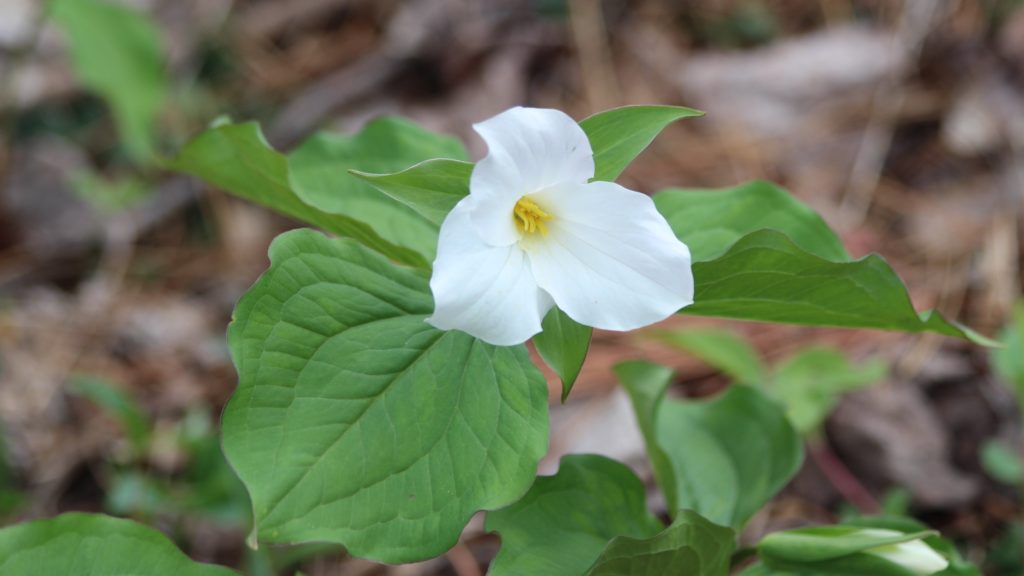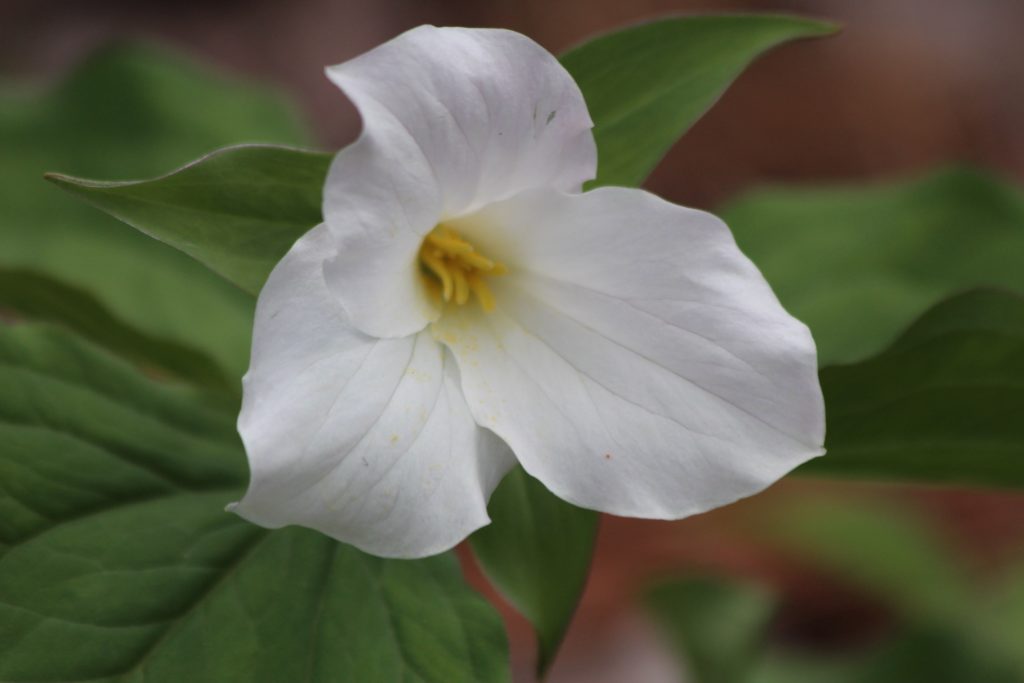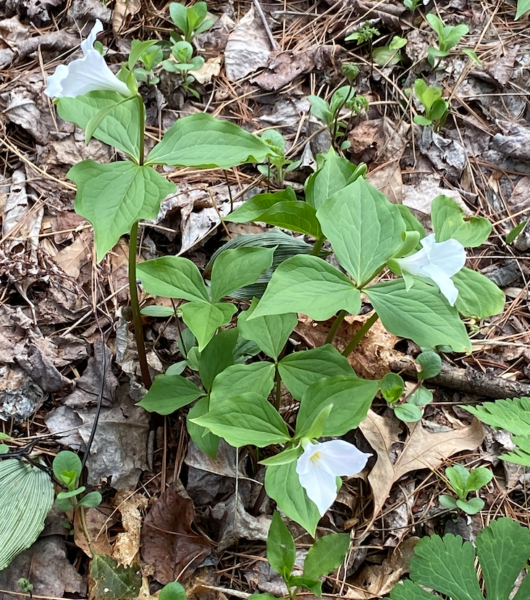
What’s in Bloom | White Trillium
April 23, 2021
- White Trillium (Trillium grandiflorum) is a herbaceous, perennial wildflower Native to eastern North America, growing primarily in lightly-shaded areas of deciduous forests.
- 12-15 inch stem with a whorl of 3 large, oval-shaped leaves; when mature, a single large, white, 3-petaled flower blooms in spring for around 3 weeks.
- Slow to mature (can take up to 5 years to flower) and often eaten by whitetail deer, White Trillium should be protected and left unharvested in order to flourish.

White Trillium (Trillium grandiflorum), also known as White Wake-Robin, Large-Flowered Trillium, and Great White Trillium, is a perennial1 herbaceous wildflower found across the Eastern USA and in Canada. It grows as a single 8-15 inch stem with a whorl of 3 large, oval-shaped leaves which are 6 inches long and 5 inches across. The large leaves provide shelter for small mammals.
The plant is slow to mature, developing for 3-5 years before it produces a single white flower with 3 large, waxy petals, 3 green sepals, and a group of yellow stamens. The bloom comes in mid- to late-spring, lasting around 3 weeks and attracting pollinator insects of the order Hymenoptera2. The white flower pinkens as it ages, and becomes a 6-angled seed capsule which darkens with maturation. Ants are the primary propagators, as they carry the fruit to their nests, eat the flesh, and leave the seeds to grow.
White Trillium has a vertical rootstock with fibrous roots, and can form rhizomes3 leading to small colonies. It prefers rich, loose, loamy soil with even moisture. A surface layer of leaf litter and other decaying organic matter helps it thrive by maintaining soil moisture and temperature. It is most commonly found in rich deciduous woodlands, swamps, and shady riverbanks. While it prefers dappled sunlight in springtime, it tolerates shade in the later months. Foliage generally decays in late summer, but should be left alone to ensure the continuing success of the plant.

While White Trillium is currently not a threatened species in Virginia, its slow maturation and the rising population of whitetail deer put pressure on its continued existence. The rootstock has a long history of medicinal use by Native Americans, and may have antiseptic, diuretic, emmenagogue, and ophthalmic properties. The leaves have been used as a cooked green and a poultice, but pressure of leaf and plant removal by humans, deer, and others can have dire consequences on White Trillium populations if left unchecked. Therefore, it is highly advised not to harvest wild trillium. If desired, it can be propagated in shade gardens; it should be ensured that the source of purchase is not wild-collected plants.
1-Perennial: returning year after year once established.
2-Hymenoptera: an order of insects including ants, wasps, bees, and sawflies
3-Rhizome (rootstalk): a special plant stem below the soil from which new roots and shoots are formed; rhizomes are a form of asexual (vegetative) reproduction and allow plants to spread without seeds
References: https://www.wildflower.org/plants/result.php?id_plant=TRGR4. https://www.illinoiswildflowers.info/woodland/plants/lf_trillium.htm, https://www.minnesotawildflowers.info/flower/large-flowered-trillium